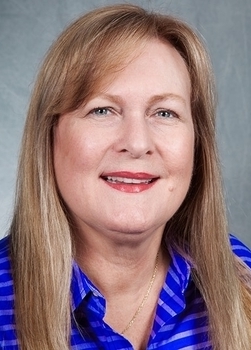I have heard some parents extol their children’s leadership abilities while, simultaneously, praising their children for not being a follower, “like everyone else.” This dual conception of leadership, while it may appear on the surface to be accurate, is not supported by decades of social psychological research. Most widely accepted social psychological definitions of leadership explain it in a more fluid manner, suggesting that, because most of us have been able to influence other people at one time or another, we have the potential to be leaders in some situations and followers in other situations. In fact, this conceptualization of a leader/follower continuum has been present since 1904, when Dr. L. Terman stated that “each member of a society is both a leader and a follower.” Since that time, many studies have been conducted on traits of leaders and followers, with the general conclusion that most people who are considered to be good leaders are also considered to be good followers. Although it is true that some group members will be more influential than others, there is no definitive set of characteristics of followers. There have been many studies of great leaders that have attempted to find out why some people emerge as great leaders while most people remain in the follower role. Most laypersons conclude that there must be something special about people who become leaders, for example, why did Abraham Lincoln become our nation’s leader? These “great person” notions of leadership have received little empirical support due to the fact that: (1) the leader/follower distinction is not a general attribute; and (2) a specific person is not a leader or a follower in all situations, at all times. Interestingly, a trait that many people believe distinguishes leaders from followers is charisma, a sort of magnetic pull that attracts people to particular people. Charisma, however, has not been shown to be a determining factor in leaders and by its absence, in followers. As with their attempt to predict who among the jurors will be a leader, many attorneys use stereotypes and other “commonsense notions” to ascribe follower characteristics to jury members. I have lost count of the number of times an attorney has told me “We need to pick a jury with a bunch of followers who will go along with whatever we tell them.” As with most things in life, deciding who among a group of strangers is a follower is not as straightforward as many attorneys believe. People are far more complicated and multi faceted than a dual system of leader/follower can explain. If the reader remains skeptical after reading this post, think about the times in your own life when you have been a leader and other times when you have been a follower; it is not an all or nothing situation.
“Lead, follow, or get out of my way.” This quote from General George S. Patton, Jr. is quoted with some variation in many discussions about leaders and followers. It came to my mind reading Melissa’s post. Her post made me realize that considering what leads to following is perhaps more interesting in some ways than what leads to leading. Melissa and I have been leaders most of our lives, in some way, shape, or form. Certainly, on “class projects,” she and I often took the lead. Yet, speaking for myself at least, there have been a few times I was happy not to be the official leader and to handle only a part of a project, not the whole thing. So, it occurs to me that many people may choose to take the lead when they care enough, or have enough energy to do so (the responsibilities and pressures of leading are significant). There are times when letting someone else “drive the bus” is just fine. I think it depends, in part, on the consequences or rewards for the outcome group endeavor – grades, for example. When there was something at stake like that, even if I wasn’t the leader, I know I’ve always been vigilant to ensure that the bus driver was paying attention and driving in the right direction. In observing the behavior of jury groups, it is interesting to see those who are silent followers. They may have life or work experiences where the don’t often get to express their opinions, and sometimes they act as though they don’t want to open up to the group for other reasons such that they keep silent. Yet, when asked directly by another group member, or later in focusing interviews by us, they often have opinions which are meaningful to the overall group. That is, they may have something to say if given a chance, or they take one. Thus, seeking followers or assuming that certain people can be “led” in some way can be dangerous. If something about a case resonates with someone, that person might not be quite the follower one hoped he/she would be. Finally, leading and following is probably partly determined by familiarity with the environment or task. For example, a person might excel in leading children’s activities at church, while that same person might be a meek, timid, follower when making significant decisions in a jury setting. Thus, for attorneys considering the role of leaders and followers, it is important to think of the specific context, say, for example, being a leader or follower in a jury decision making task, rather than life in general. Similarly, considering the role the attorney’s client had in the environment which brought him/her to the courtroom is worthwhile. The law may treat this as irrelevant – e.g., felony murder, or conspiracy charges, but, certainly it has some bearing in the big picture and in telling the jury “the rest of the story.”



Comments are closed.